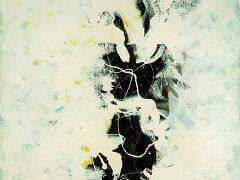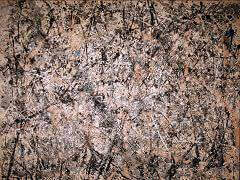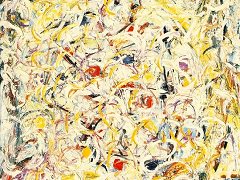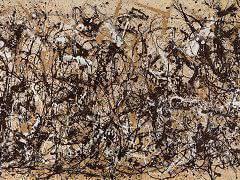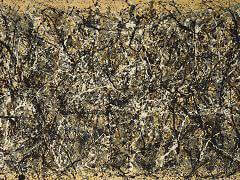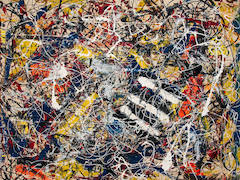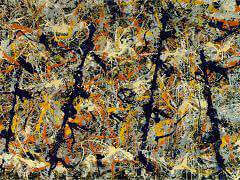Number 32, 1950 by Jackson Pollock
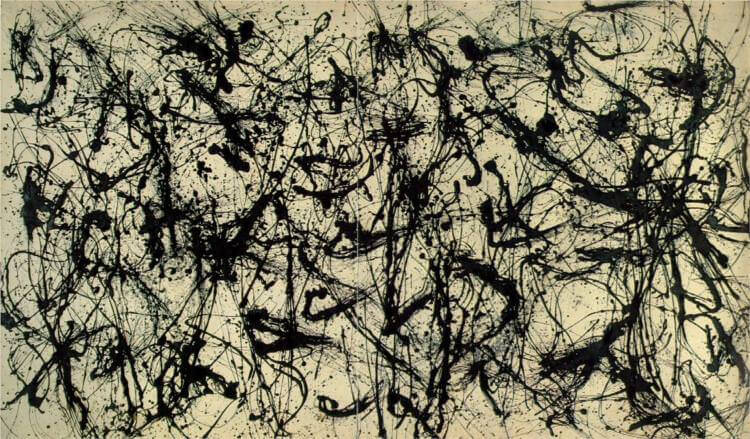
In Number 32, Pollock engaged in an art practice that was highly active in order to cover such large spaces. In order to spread the paint he would have to stand over, walk around and run across the canvas. In doing this
the lines and shapes of paint created by Pollock are very expressive. Pollock creates a sense of movement and spontaneity in his artworks.
Number 32 challenges our view of what a painting should be. Traditional, high art, paintings had a back, middle and foreground. Number 32 only has a foreground which creates a sense of flattened space.
Pollock plays an active role as the artist in this work but so too does the audience. This work involves the audience using their imagination. It is part of the human condition that we need to make sense of everything we see. If
you look at this artwork for a while you will find your imagination running wild as it tries to make images out of the lines and organic shapes.
The title of the artwork does not restrict the interpretation that can be given of the work.
Pollock has not depicted a 'subject' as such in this work. Rather, it us up to the audience to give the artwork meaning. Like making pictures out of clouds, each viewer will interpret the work differently and see things others
will not.



